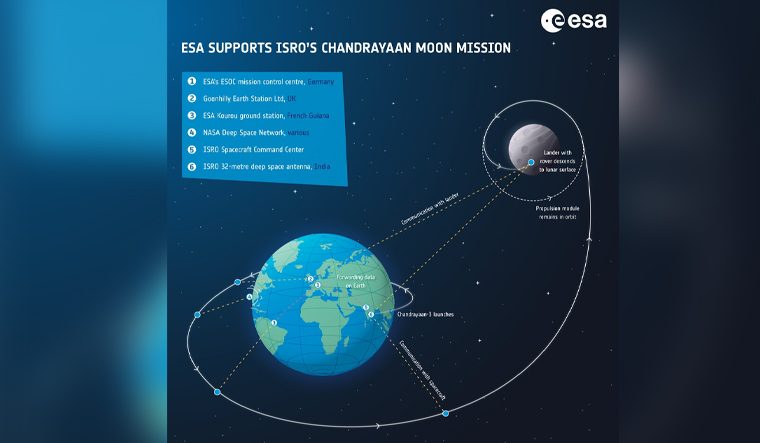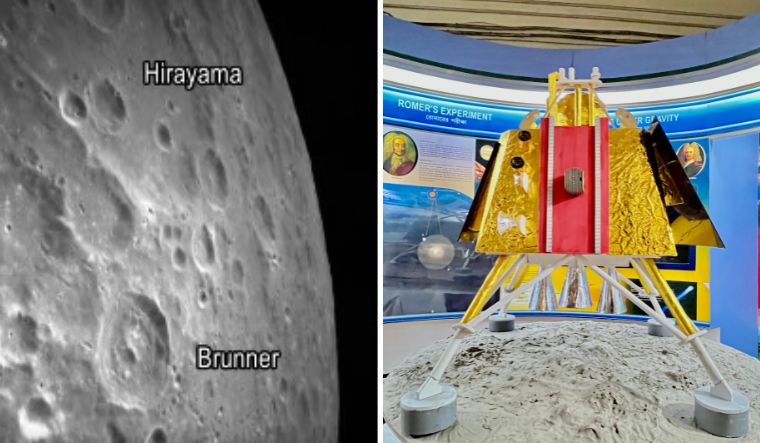India's Chandrayaan-3 mission is on the cusp of a historic lunar landing, and as the Vikram lander prepares for its final descent, it's crucial to understand the intricacies of this "soft landing" and the technical manoeuvres involved. The Chandrayaan-3 mission's choice to land at the moon's south pole is significant because it is an unexplored region where water molecules have been found. This could hold valuable clues about the early solar system.
Livestream Chandrayaan-3 landing HERE
As the countdown to Chandrayaan-3's landing continues, the world watches with anticipation, knowing that a successful soft landing will not only be a technological achievement but also a step towards unraveling the mysteries of our lunar neighbor.
The Chandrayaan-3 spacecraft is composed of two modules: the propulsion module and the lander-rover module. Once it successfully lands on the moon, the Vikram lander, along with the Pragyan rover inside it, will conduct a series of experiments. These experiments include analysing the composition and properties of the lunar surface, documenting heat retention in the polar regions of the moon, investigating seismic activity in the landing vicinity, and measuring the distance between earth and the lunar south pole.

The lander has enhanced features, including more fuel for last-minute landing adjustments and solar panels on four sides for uninterrupted power.
The mission of the Vikram lander and Pragyan rover is expected to last for 14 days, which is the duration of sunlight available near the lunar south pole after landing. After this period, their power is expected to decrease. Meanwhile, the Chandrayaan-3 mothership will continue to orbit the moon and carry out experiments aimed at studying Earth from this unique vantage point.
Chandrayaan-2 faced difficulties during its soft landing phase, resulting in a crash. One of the main challenges was the transition from horizontal to vertical orientation, which the Chandrayaan-3 mission aims to address with improved precision.
SOFT LANDING
A soft landing in the context of lunar exploration is the gentle and controlled touchdown of a spacecraft on the lunar surface. The goal is to ensure the safety of both the spacecraft and any instruments or rovers it carries. Here's how it is achieved:
Transitioning from horizontal to vertical:
As the Chandrayaan-3 lander approaches the moon's surface, it faces a critical moment. It needs to change its high-speed horizontal orientation to a vertical one. This manoeuvre is crucial for a gentle descent, allowing the lander to gradually lower itself to the lunar surface rather than crashing.
Powered descent:
After transitioning to a vertical position, the lander begins its powered descent phase. During this phase, precise thruster firings control the speed and trajectory of the lander as it approaches the lunar surface. This careful control ensures that the lander touches down softly and safely.
Post-landing Operations:
 ESA supports ISRO's Chandrayaan Moon mission
ESA supports ISRO's Chandrayaan Moon mission
Upon landing, the lander and rover will undergo internal checks to ensure all systems are functioning as expected. They will remain stationary at the designated landing site until sunrise on the moon.
Scientific activities:
Once safely on the lunar surface, the rover will emerge from the lander and embark on its mission of scientific exploration. It will conduct experiments, including analysing lunar surface composition, studying soil properties, investigating seismic activity, and more.
Communication systems
Communication is vital during these deep space missions, and ISRO collaborates with partner organisations like ESA and NASA. Ground stations around the world provide support for tracking, commanding, and receiving data from spacecraft, reducing costs and fostering international collaboration. The data signals sent by the Chandrayaan 3 lander will be received directly by the mission control in Bengaluru. These signals will be received at ground stations located at the Deep Space Network in Bengaluru, the Jet Propulsion Laboratory in the US, and a European Space Agency station in Spain.


